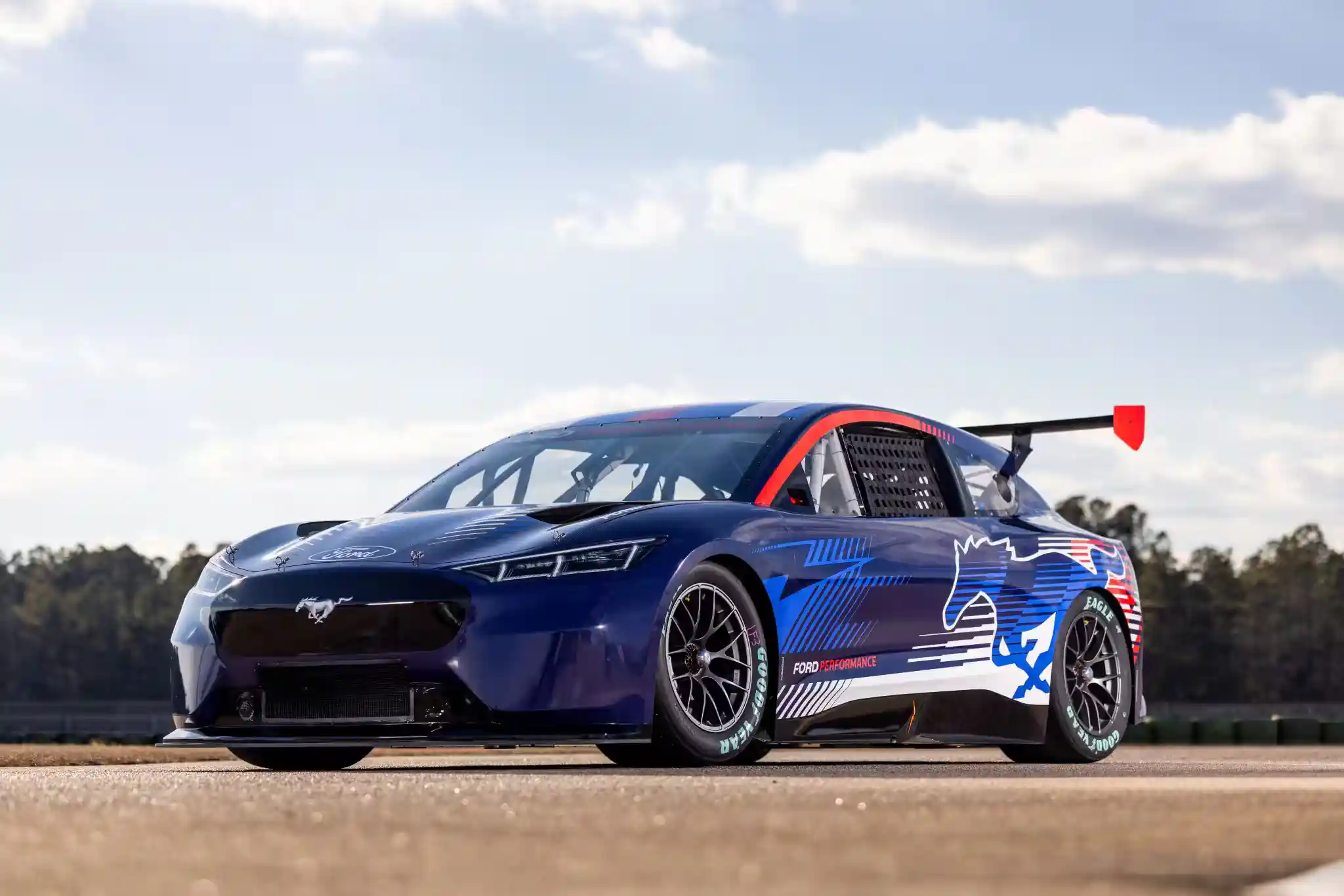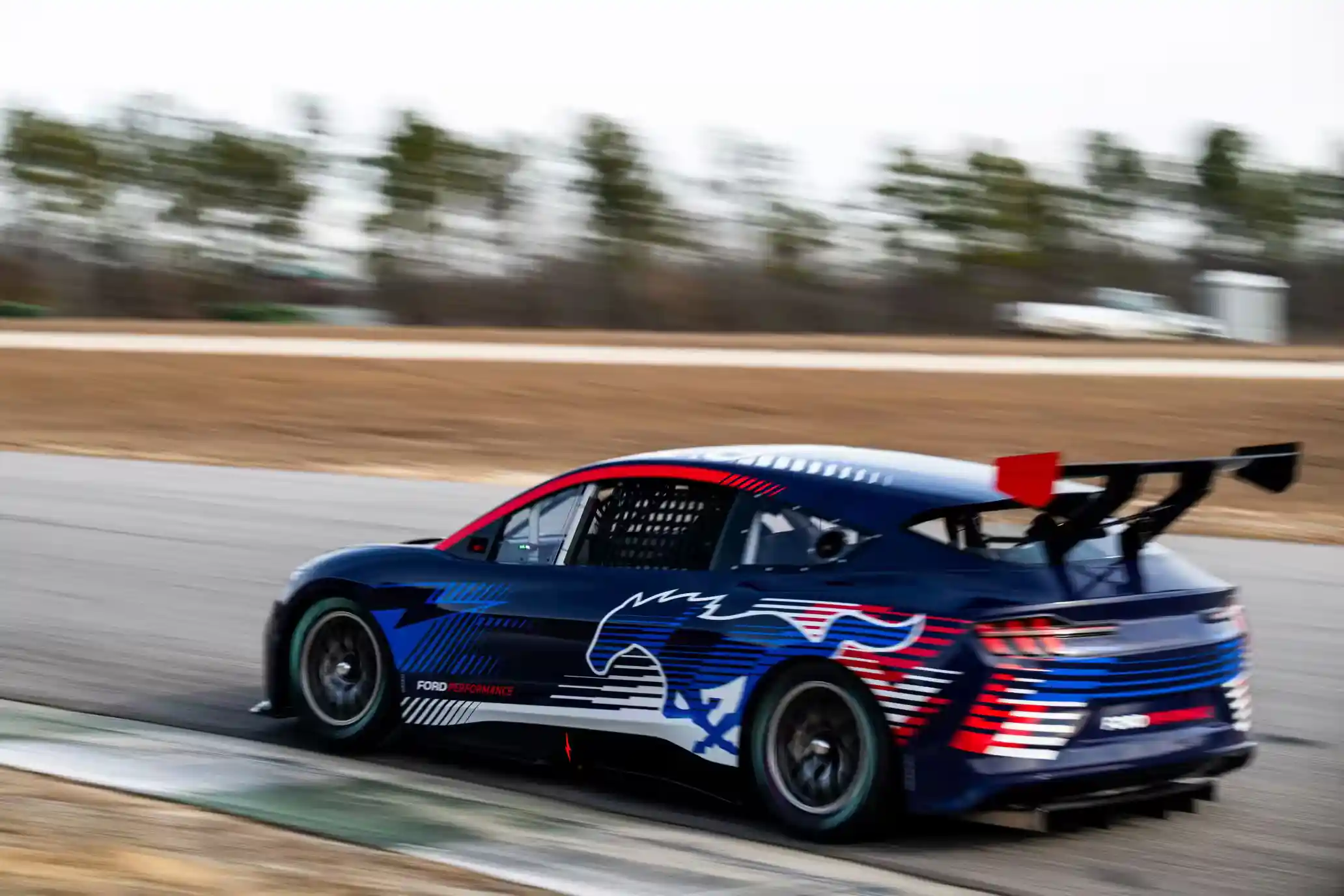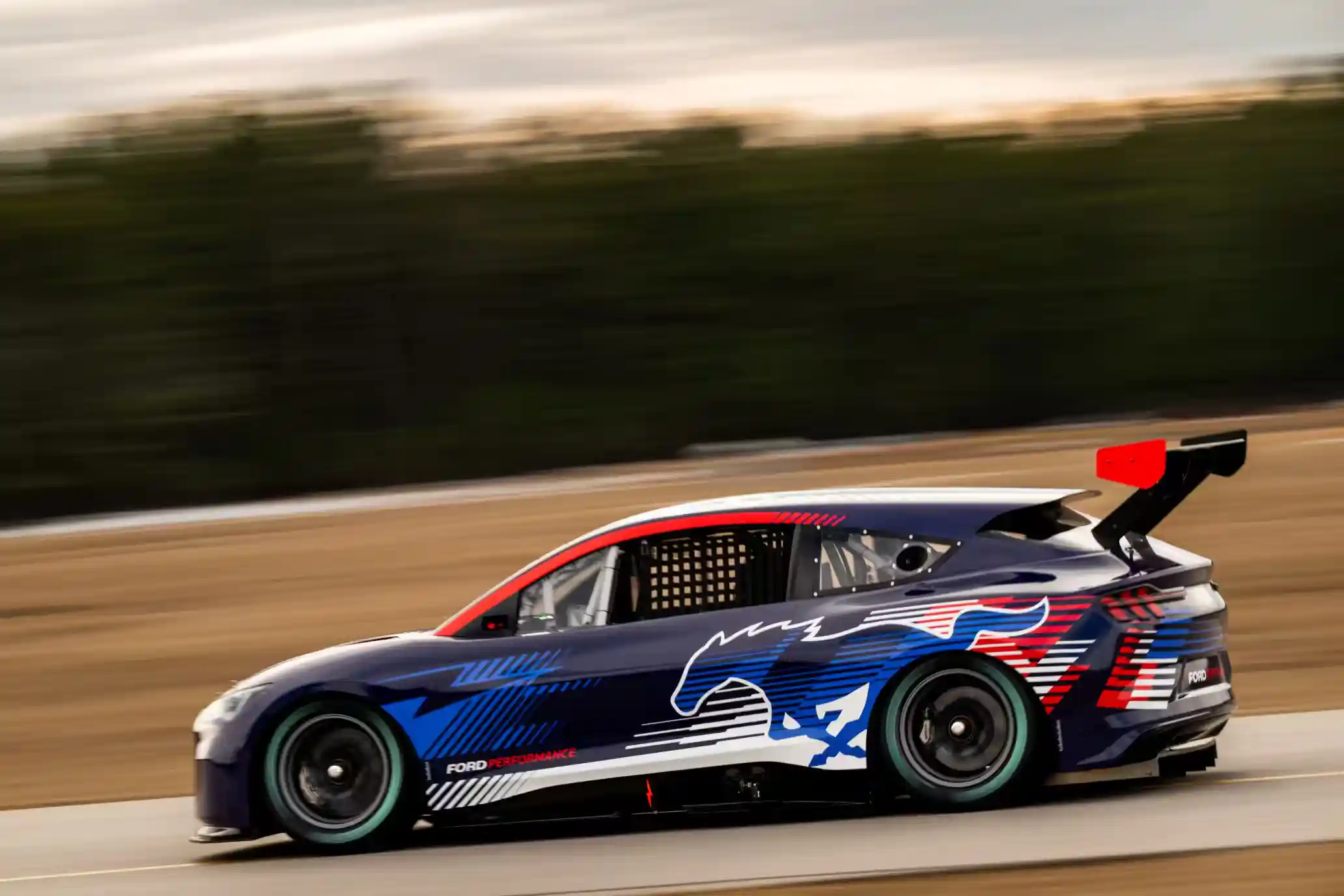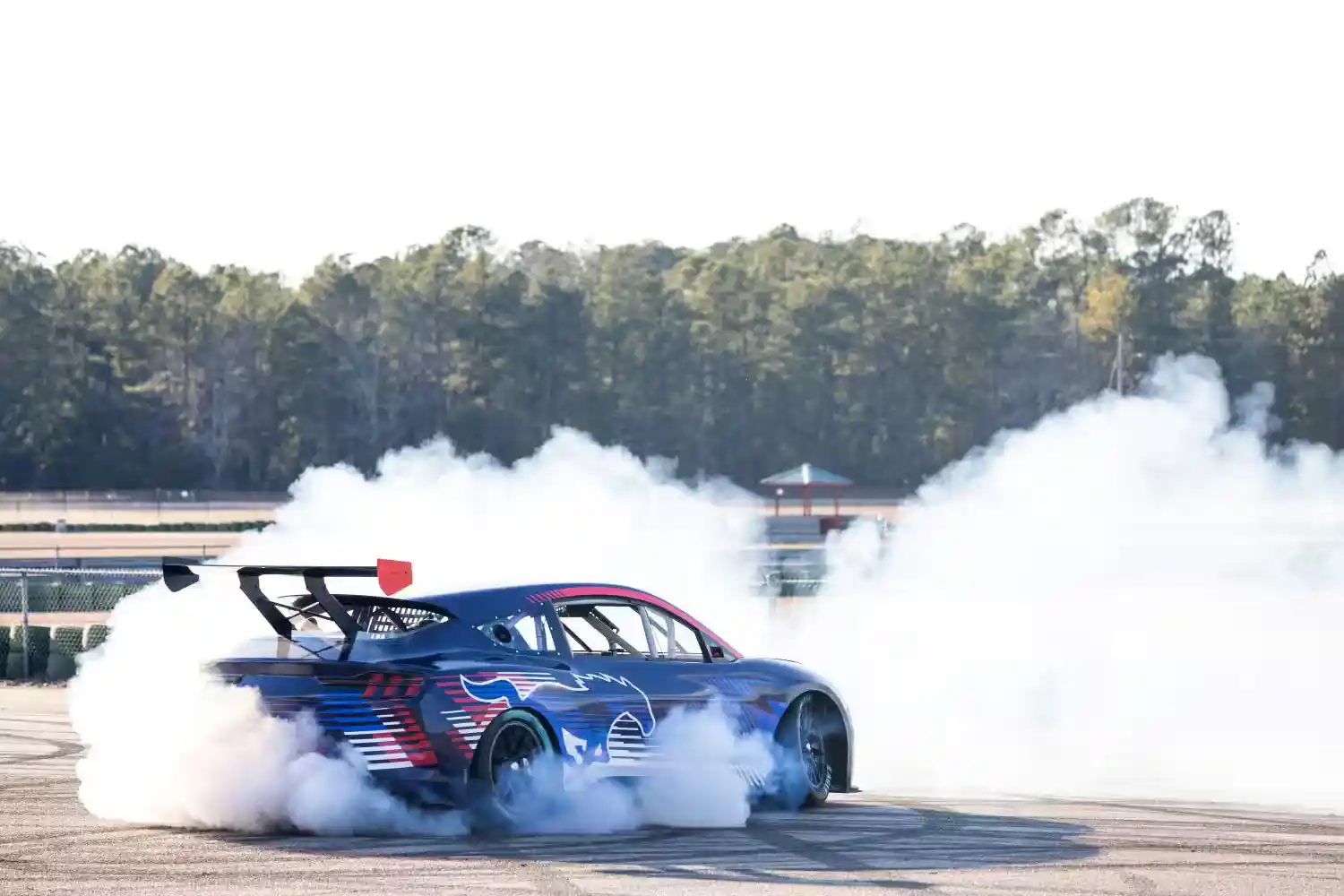The 1200 HP Ford Mustang Mach-E NASCAR Prototype represents a novel technical and design approach applied to racing and global demonstrations. Developed based on previous NASCAR concepts, the vehicle brings together innovations that combine performance and aesthetic adaptations, showcasing the possibilities of electrification in motorsports.
The purpose of this article is to present, in a direct and objective manner, the technical details and structural modifications that differentiate the prototype. Throughout the text, information will be addressed regarding the propulsion system, design adaptations to confer SUV characteristics, and the internal configurations that highlight the integration of technologies focused on efficiency and safety.
Performance and Power of the Mustang Mach-E NASCAR Prototype
The prototype stands out for generating 1200 horsepower, obtained through a system composed of three electric motors. This configuration was studied to offer consistent propulsion aligned with the technical challenges of racing. The engineering involved demonstrated that leveraging already tested components can result in performance compatible with the demands of international events.

Furthermore, the vehicle’s high performance is reflected in its capacity to participate in demonstrations and events, without necessarily being linked to a pre-established racing series. The application of these 1200 horsepower, distributed in a balanced manner among the motors, allows the technical team to explore new performance possibilities without compromising the safety or structural integrity of the prototype.
Innovations in the Design and Structure of the Prototype
The design adaptation was conceived to differentiate the prototype from the original NASCAR concept. With a chassis that inherited elements from the previous model, Ford made modifications that include a wider rear and a raised roof, giving the vehicle an appearance closer to that of an SUV. This choice was guided by the need to maintain the identity of the Mustang Mach-E, even in a context focused on racing and exhibitions.

The structural changes were not limited to aesthetics. The suspension and other essential components were taken from the base chassis, but received adjustments that meet both regulations and the demands of on-track performance. In this way, the prototype demonstrates the ability to combine the robustness necessary for competitions with the modern and functional design that characterizes current models of the brand.
Technological Adaptation for Racing and Demonstrations
The main objective of the Ford Mustang Mach-E NASCAR Prototype is to serve as a technological demonstration platform. Although not developed to join a specific racing category, the vehicle is used in international events to showcase the possibilities of electrification applied to motorsports. This strategy allows for practical testing in real-world conditions, contributing to the improvement of future technologies.

The presence of driver Romain Dumas, with extensive experience in competitions such as Le Mans and Pikes Peak, reinforces the technical and experimental nature of the prototype. Participating in events such as the Goodwood Festival of Speed and the Bathurst 12 Hour, the vehicle demonstrates its adaptability and the effectiveness of its systems, paving the way for eventual regulations that may include electric cars in NASCAR.
Technical Details and Vehicle Configurations
Regarding the internal configuration, the motors and transmission are positioned in front of the firewall, while the battery occupies the rear part of the vehicle. This distribution contributes to a dynamic balance, favoring both stability and propulsion efficiency. The components were organized in a way to maximize performance without sacrificing safety and technical reliability.

Other relevant aspects involve the tires, manufactured by Goodyear with a renewable compound, and the integration of electronic systems that manage the power of the three motors. Although the exact data on energy consumption has not been disclosed, the set of configurations demonstrates a concern for technical and environmental viability, without compromising the performance required in high-level demonstrations.
Author: Fabio Isidoro
Fabio Isidoro is the founder and editor-in-chief of Canal Carro, where he has been writing about the automotive world since 2022. Passionate about cars and technology, he began his journey on the HospedandoSites portal and today dedicates himself to creating technical content and comprehensive analyses of national and international vehicles. 📩 Contact: contato@canalcarro.net.br

